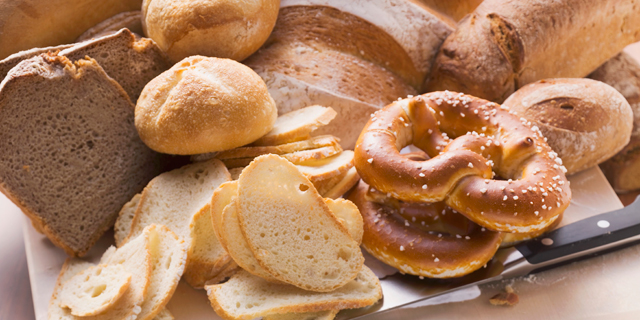This is a hard truth: As much as half the food we grow doesn’t end up in our fridge or on our dinner tables, it ends up in the landfill. That means that though much of the world goes hungry, much of the world’s food supply ends up costing money and taking up precious green space. But we can help change all that. By making a few simple changes in how we use what we already have and usually throw away, we can help make that number smaller. We can reuse, reduce, and recycle kitchen scraps into delicious new meals – saving money and making the world a better, greener, cleaner place. Here’s how. We’ve already covered fruits and veggies, now we’re onto stale bread, herbs, and beyond.
Stale Bread
The low carb-diet never took hold in my home; my husband is a bread fanatic and buys our next loaf before we’ve finished the one we’re already nibbling on, a tendency that leads to a backlog of bread. Rather than try to break the habit, which is futile, we stockpile bread that’s too crusty for eating, along with the ends of loaves, which no one seems to eat, and then turn it into homemade bread crumbs.
If you feel like being artisanal and hands-on, then use a box grater to crumb the bread; otherwise, a food processor or blender can do the job quickly. Don’t worry if the breads are different; the variety of textures and flavors will give the crumbs depth of flavor. Run your hand through the crumbs; if they feel a bit moist, spread them out on a baking sheet and dry them in the oven for about 10 minutes before storing them in an air-tight container. If you want to give the bread crumbs flavoring, add some dried herbs or dried, finely chopped chiles.
Uses: Breading for bistec or pollo empanizado, as well as milanesas and croquetas.
Herbs
Herbs that are a bit past their prime are practically begging you to turn them into pesto rather than discard them. Cilantro, basil, parsley, and oregano–practically any herb, really– can be salvaged by rinsing, lightly drying, and then pureeing with olive oil, salt, and nuts of your choice (pine nuts, pecans, walnuts, and hazelnuts all work well). If you don’t plan to use the pesto right away, it can be stored in an air-tight container in the freezer.
Herbs that are just beginning to wilt and lose their freshness can also be salvaged by drying. Wash the leaves and stems, towel dry them gently, and hang them upside down in a cool place. Once they are dry and fragile to the touch, just crush them gently between your fingers and store them in an air-tight container. For a more detailed guide, click here.
Uses:Check out all our recipes for pesto pairings–from grilled fish to pasta–here.
Fish carcasses; Shellfish shells (especially shrimp and lobster); Bones from cuts of beef or poultry
Don’t toss those bones! Perhaps the most underutilized scrap in the home kitchen, bones from nearly any of the meats you cook can be used for stocks and broths, just as vegetable scraps can. The process of making meat-based stocks is a bit more involved than that of making vegetable stocks– with beef stock, for example, you’ll want to roast and then simmer the bones for a while to coax out their deep flavor. And for all of the stocks and broths made of bones and carcasses, you’ll have to skim fat and strain for small and large solids. But once you taste the result, you’ll probably be reluctant to buy stock or broth from the store again.
Uses: As a base for soups and stews.


![Making Mealtime Matter with La Familia: Easy Sofrito [Video]](https://thelatinkitchen.com/wp-content/uploads/2015/10/sofrito-shutterstock__0-500x383.jpg)
![Easy Latin Smoothies: Goji Berry Smoothie [Video]](https://thelatinkitchen.com/wp-content/uploads/2015/12/goji_berry-shutterstock_-500x383.jpg)
















![Fun and Fast Recipes: Fiesta Cabbage Salad [Video]](https://thelatinkitchen.com/wp-content/uploads/2015/11/fiesta_cabbage_slaw-shutterstock_-500x383.jpg)









